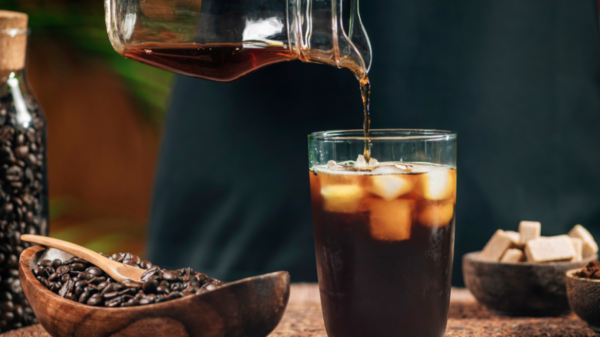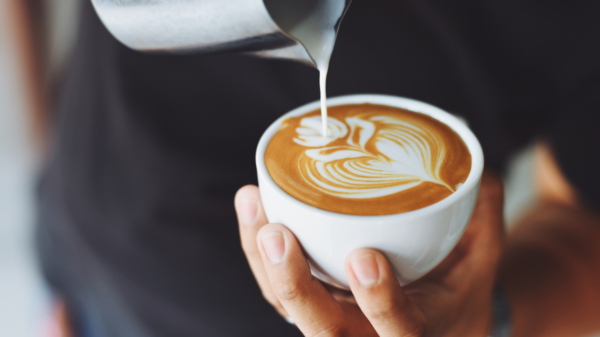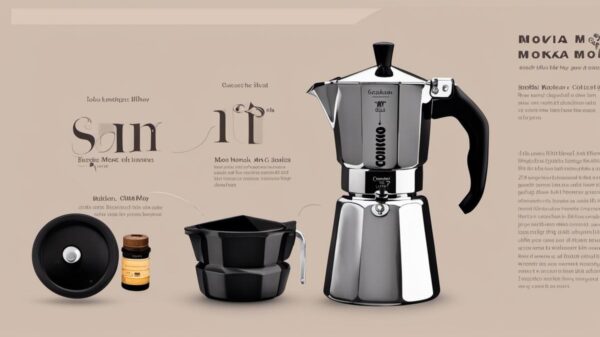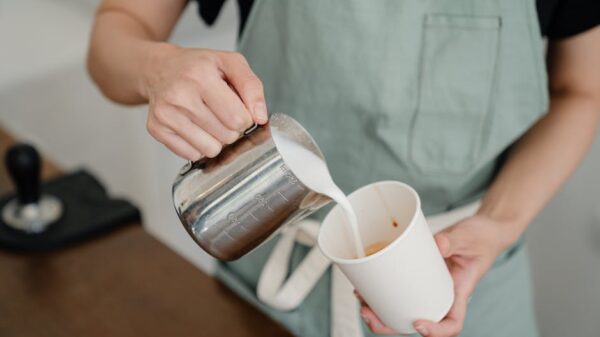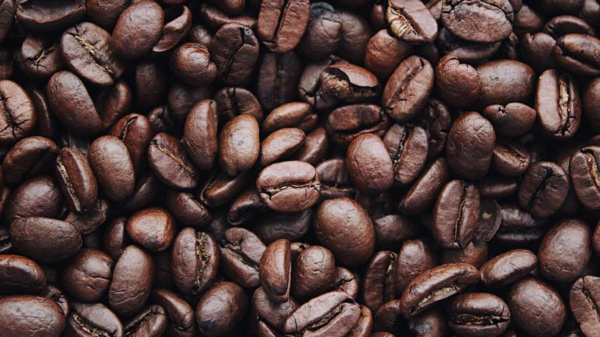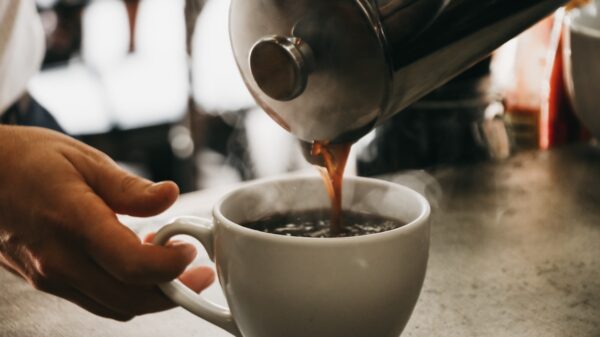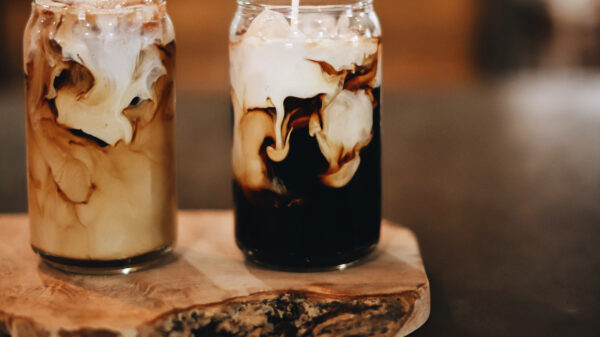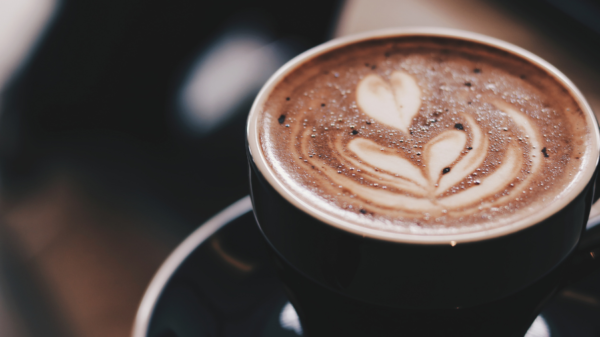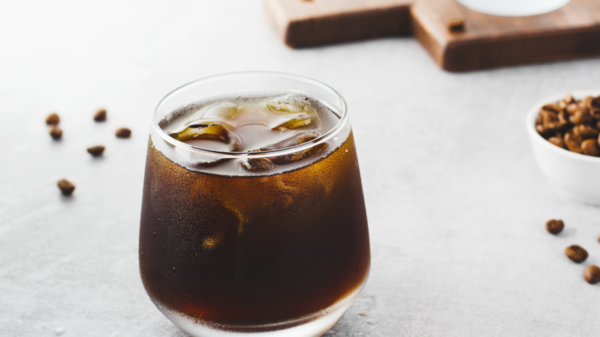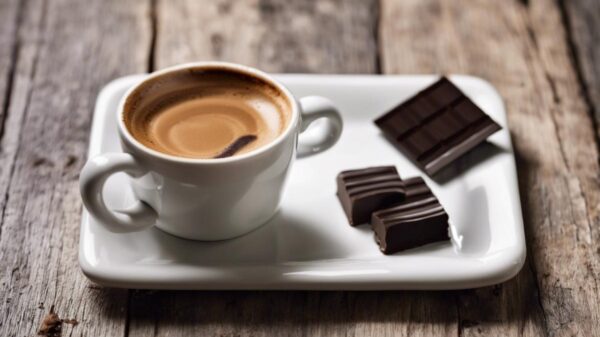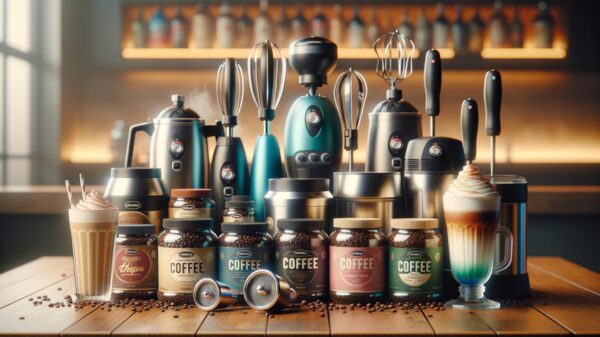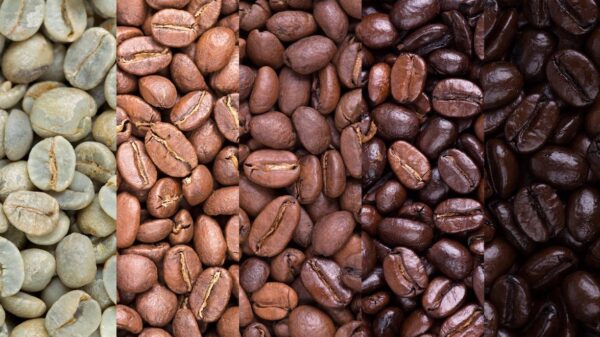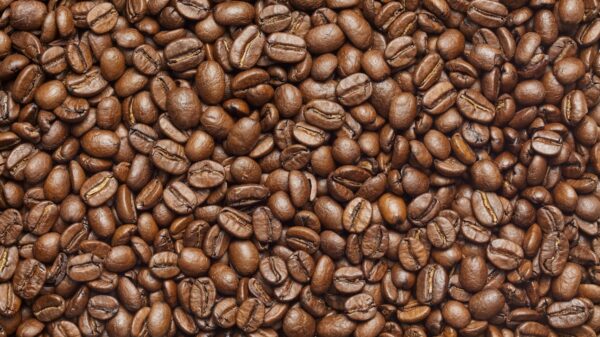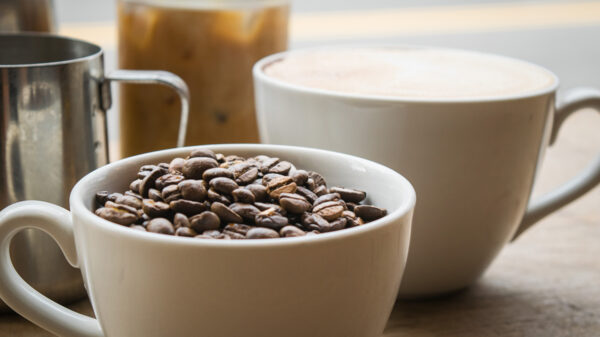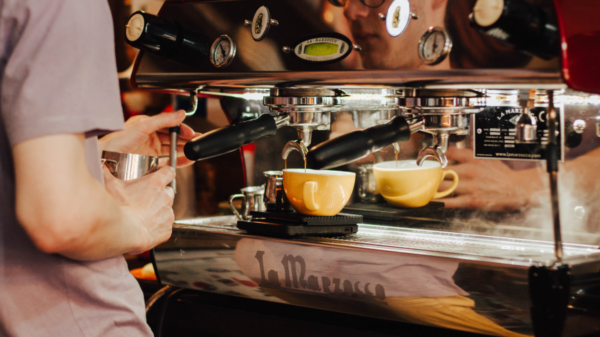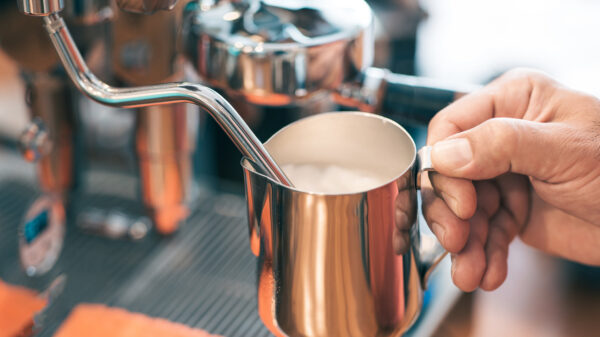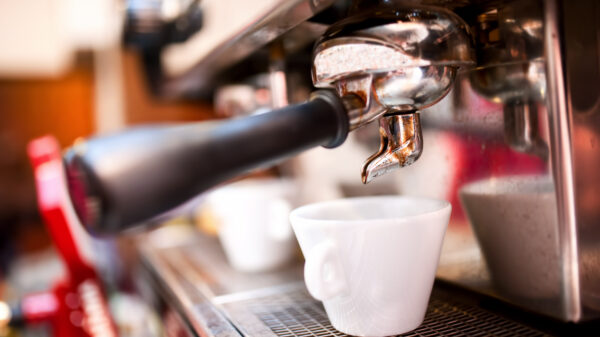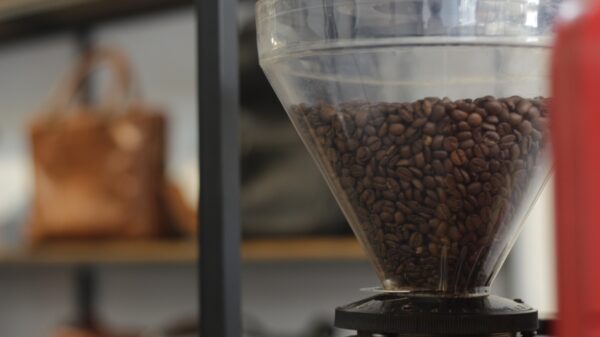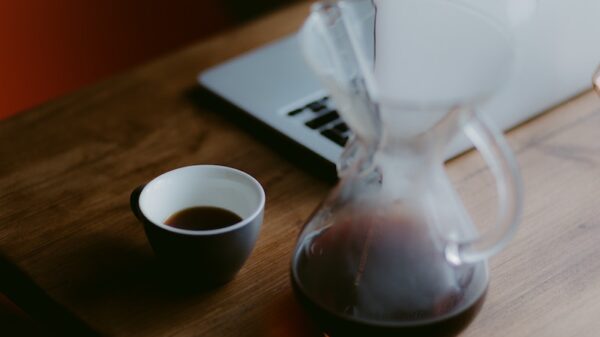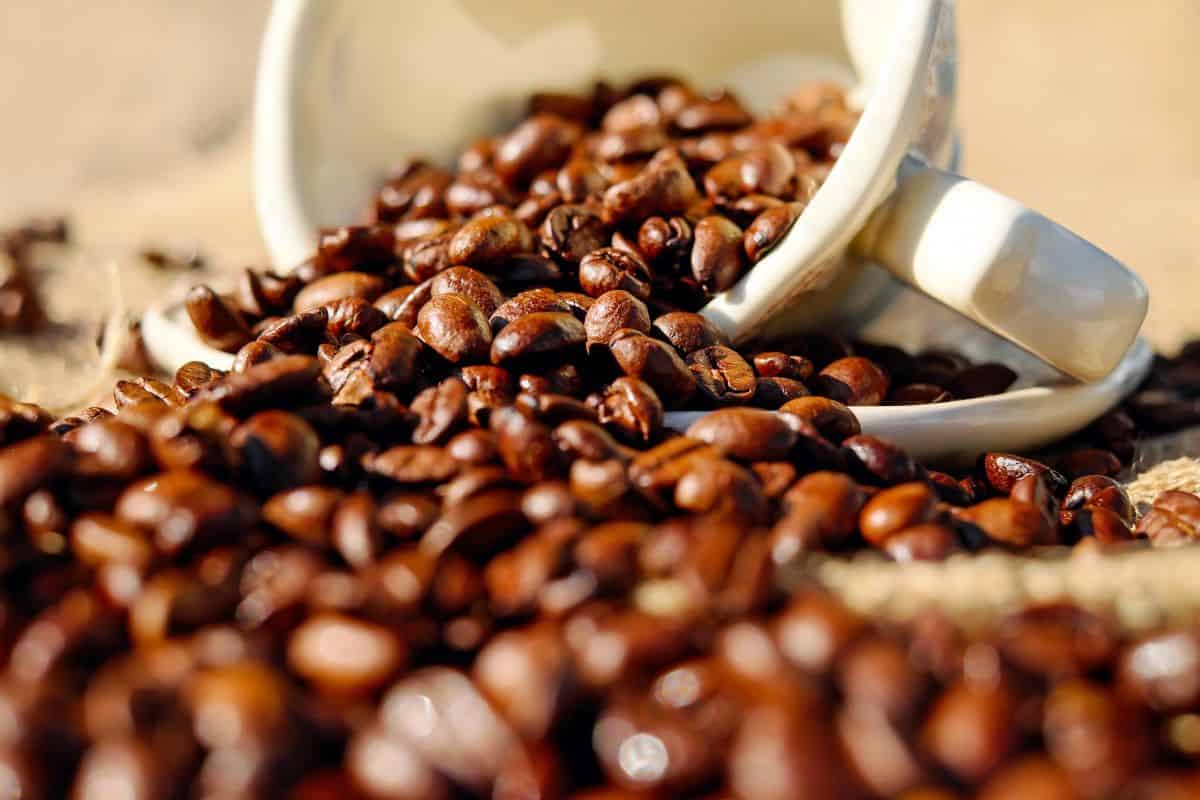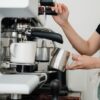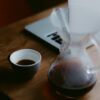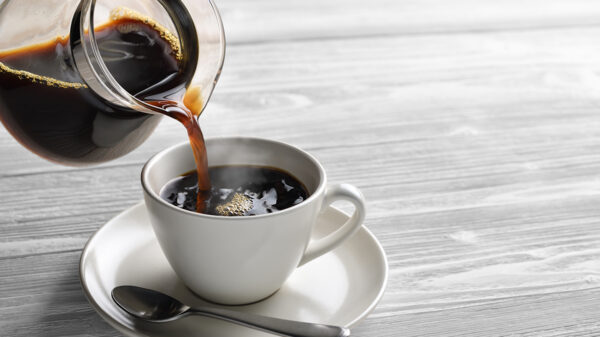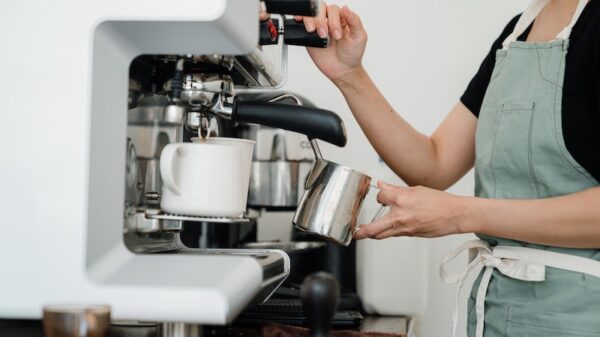The Difference Coffee Bean Roasting Makes
Coffee bean roasting is an art form for some coffee makers. There are many types of coffee beans available today and coffee bean roasters vary their techniques depending on which type is selected. Some coffees can be roasted for as little as 8 minutes while others need up to 30-40 minutes at very high temperatures to ensure they roast evenly and come out tasting amazing.
So, what is coffee bean roasting, and does it make a difference? Roasting coffee beans is the process of using heat to transform coffee beans into coffee. This can be done in different ways and each method offers its unique flavor profile. The way a coffee bean roasts affects the taste of your coffee greatly, so it’s important to use proper techniques when making any type of coffee especially espresso or other specialty drinks.
Keep reading to learn more about the difference that you can taste when you drink a cup of coffee made from expertly roasted beans. We will also discuss what type of coffee roaster you should use to achieve the best results.
Choosing the Best Coffee Roaster
Some coffee roasters, like a drum coffee roaster, have a pretty simple design. These coffee bean roasters consist of a drum rotating over the heat source with coffee beans inside. They can roast up to 8 ounces of coffee at once and usually take about 18 minutes to complete the process.
Air coffee bean roasters are another type that uses hot air as the heat source instead of a drum coffee roaster that uses an open flame. These types of coffee roasters are often preferred by coffee lovers. They roast coffee beans without adding any additional flavors and the coffee bean roasting process is completed much more quickly than with other types.
Even though both methods (drum and air) use heat to roast coffee beans, the coffee bean roasting time can vary depending on the type of coffee maker you have. A coffee maker with an open flame will need to roast coffee beans for about 15 minutes while drum coffee roasters only take about 6-8 minutes to do the job.
When looking for a coffee bean roaster you should look for the following features:
- built-in thermometer
- tempered glass window to monitor coffee bean color
- air roasted coffee beans vs oil roasted coffee beans
- coffee bean cooling system
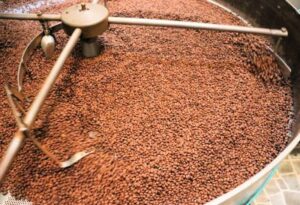
Details to Consider When Purchasing a Roaster
There are several details to consider when purchasing a coffee bean roaster. Some of these include the following:
- Where you plan to use it most often
- What type of coffee maker do you have (espresso machine vs regular drip)
- How much room do you have in your kitchen
- The size or volume capacity of the roaster
For coffee drinkers who roast their coffee beans at home, it’s best to find a coffee roaster that fits your coffee maker. This allows the whole roast process to be completed without spilling coffee beans or having to transfer them from one machine to another. This may seem like an inconvenience for some, but coffee lovers know the extra effort is worth it!
Coffee Bean Roaster Capacity
Once you know how much room you have in your kitchen and what type of coffee maker you will use to roast coffee beans, it’s time to look into different coffee roasters that will best fit your needs!
If coffee beans are removed from the coffee roaster too soon they won’t have reached their full coffee flavor capacity. On the other hand, coffee beans that are taken out when they’re too dark can give you burnt coffee flavor and taste bitter.
It’s important to keep in mind the size of your coffee roaster because different machines use different amounts of coffee beans at one time.
Here is a general guide that will help you choose how many coffee beans each machine can roast:
- small coffee roasters for home use roast 5-6 oz of green coffee beans
- medium-sized coffee roasters for home use roast 8-12 oz of green coffee beans
- large coffee or for home use roast 20 or more coffee beans at a time.
All coffee roasters should be cleaned regularly to get rid of coffee dust that accumulates inside the coffee bean roaster. This will affect coffee flavor over time. Coffee dust is made from coffee grounds that have been roasted for too long. It’s important to be mindful of how long your coffee beans are in the coffee roaster!
Some home coffee roasters must only roast 1-2 times a day while others give you the option to roast several batches one after another. This is important because depending on how much coffee you drink and what type of tasting experience you want from your coffee it might not matter if you can’t roast more than once or twice a day.
How to Roast Coffee Beans
The coffee roasting process can be divided into six major steps:
- heating of the coffee beans
- expansion
- coffee bean surface browning
- coffee beans inner browning
- cooling
- packaging
The coffee roasting process typically uses heat. Coffee beans are placed in a drum and rotated until they reach the desired color for that coffee roast level. This can be anywhere from light to dark, which is broken down into even darker categories such as cinnamon or espresso.
Once coffee beans are removed from the oven, they are dumped out of their container into another machine where their skin gradually cracks off based on how quickly coffee beans cool after roasting.
It’s important not to dump coffee beans into a container while they’re still hot. This will cause them to lose flavor and aroma. Once you begin using your coffee roaster, filtered air will speed up coffee bean roasting time and prevent spillage during coffee bean cooling.

Stages of Roasting a Green Coffee Bean
There are three stages that a green coffee bean goes through during the roasting process:
- Begin as coffee green coffee beans.
- Color changes to yellow, orange, and red during coffee roasting
- Beans turn brown once they reach the coffee roast level required for that type of bean
For most coffee drinkers, each coffee-making technique results in a different flavor and aroma profile. Some coffees taste better when darker roasts are used while others prefer lighter roasts – it all comes down to personal preference!
Alternative Coffee Roaster Methods
There are two primary ways to roast coffee beans: the coffee oven method, also known as coffee drum roasting, and coffee gas roasting.
Coffee is roasted in the oven at temperatures between 300-450 degrees Fahrenheit for 10-30 minutes. Because coffee beans are roasted in an enclosed environment without exposure to atmospheric oxygen, coffee bean volume can be reduced by more than 50%.
Coffee drum coffee roasting is the most common coffee roasting method, accounting for roughly 90% of coffee roasts worldwide. Compared with coffee gas roasting, coffee drum coffee roasting results in coffee beans having a uniform bean color and a more uniform coffee flavor.
However, coffee is roasted longer to achieve coffee beans with the same coffee roasting degree. Coffee drum coffee roasting equipment consists of a coffee roasting drum and an exhaust unit to remove smoke and other residues from coffee bean roasting.
Coffee Press vs Coffee Bean Roasting
When choosing how you’re going to roast your coffee beans at home it’s important to note the differences between using a coffee press vs coffee bean roaster.
A coffee press uses hot water to extract coffee from coffee beans, while coffee bean roasting works by using heat to remove moisture and flavor oils inside coffee beans. This causes the coffee bean to expand.
Some people get confused when talking about coffee presses versus coffee bean roasters. This is why it’s important to know that these are two separate methods for making coffee at home.
Coffee lovers who like a strong cup of coffee should consider using a French Press or another method of pressing your coffee grounds. You will get more oils in your cup compared to regular drip machines. When purchasing a French Press make sure you get one with fine mesh so your coffee doesn’t have any grit in it!
When choosing coffee beans for coffee brewing methods like a coffee press, make sure you choose coffee beans that taste good using your coffee-making technique. Ensure these coffee beans are fresh as old coffee beans give off poor flavor and musty aromas.
Important Facts About Coffee Roasting
Here are a few fascinating coffee roasting facts:
- Roasting coffee transforms the chemical and physical properties of green coffee beans into roasted coffee products. Developing flavors during roasting depends on the applied temperature, coffee origin, bean variety, and coffee processing.
- The degree of roast affects coffee flavor and body. Roasting coffee to a light degree produces coffee with a subtle but distinctive taste while roasting coffee longer, darker, or at higher temperatures develops coffee with contrasting flavors usually perceived as “sharper”.
- Did you know that once roasted, coffee beans start losing their flavor immediately! Coffee should be consumed within 20 minutes of the coffee roasting process. For coffee to retain its flavor, coffee beans must be stored properly. Coffee freshness is best preserved when coffee beans are kept whole and stored in an air-tight container at room temperature.
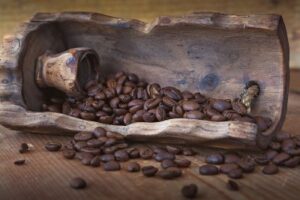
Time to Get Roasting!
Coffee is coffee – but coffee beans aren’t coffee. Before the coffee bean can be enjoyed, it must go through coffee roasting. The coffee roasting process can also produce coffee with contrasting flavors, often described as “acidy” or “bright”.
It is these coffee characteristics that help coffee drinkers to fall in love with coffee. Whatever your coffee preferences are, give coffee bean roasting a try. You might be surprised by the flavors you create!


